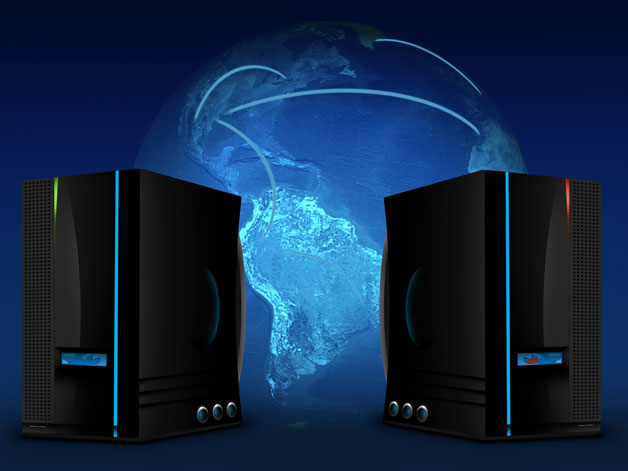部落格
主頁 » 部落格 » Edge Data Centers: The Impact
Edge Data Centers: The Impact
Posted on July 11, 2017 by Gento

At their core (no pun intended), edge data centers are a natural response to both the increased demand of things like Internet-based content and the trend of moving more networks directly into the cloud. What started as a simple conceptual response to bandwidth-intensive ideas like the Internet of Things (IoT) has quickly turned into something few could have predicted. Though edge data centers began life in a form that many described as "glorified content delivery networks", they definitely didn't stay that way for very long.
The new, edge-driven world of data centers that we're now living in actually has a number of important implications that you need to be aware of moving forward.
What Are Edge Data Centers?
According to the experts at NetworkWorld.com, a data center must meet seven core criteria to even be considered an edge data center in the first place. These include:
- The location must serve more than 50% of broadband requirements locally.
- It must also be responsible for handling 75% of local Internet usage.
- It must be serving a range of high-bandwidth applications where distance is a major factor.
- It must yield measurable cost and performance benefits over its core counterparts.
- It must be responsible for delivering a rich, media-driven experience.
- It must offer improved security, particularly in terms of isolating a network from DDoS and similar types of attacks.
- It must be a Tier-3, N+1 data center. This means that it guarantees a 99.982% uptime rate.
Unless all of the previous criteria are met, a data center is not an "edge" data center at all - it just happens to be a very similar data center that happens to exist in a tier-2 market.
The Impact and Implications of a Life on the Edge
Mentioning the requirements of calling a data center an "edge" data center in the first place is important, as it contextualizes the many different benefits that these types of operations bring to the table and why the impact of their popularity is so great.
If a computer user is simply browsing their favorite website on the Internet, it's nearly impossible to tell whether you're "near" or "far" from the edge. When you begin to think about more important objectives, like monitoring traffic in real-time for the purposes of providing actionable safety information to drivers, suddenly every second counts. Latency becomes a big factor, not only because high latency will ultimately degrade your ability to do your job by harming performance but it will also make it more difficult to maintain a secure environment at the same time.
When you consider the host of different applications that require low latency in the modern era, from online gaming to cloud-based enterprise applications to streaming video and more - you begin to get an idea of just how important edge data centers have become.
This also brings the discussion towards the aforementioned Internet of Things, where literally billions of devices are all creating, storing and sharing information with one another in real-time. Not only is the bandwidth requirement of the IoT massive, but issues like performance and security are once again major factors. If every "smart" item in your home is connected together, your provider's network got a DDoS attack at a centralized point it would essentially take your whole world offline. Likewise, these devices are intended to come together to form a seamless experience - unacceptable network latency could make that impossible.
These ideas are fundamental to the modern business that edge data centers have even impacted the direction the entire industry is headed in. Essential data is already being made available at the "near edge" in large data centers, but trends like the IoT will only increase the need for micro data centers to exist alongside their larger, centralized counterparts sooner rather than later.
In addition to giving us better services with better performance at better prices, it's easy to see the world where in ten years edge data centers are no longer a niche. They become the "new norm," driving innovation and business transformation for years to come. Now that you are equipped and more knowledgeable about the edge, why stop there? For more information about data center management to better accomplish your goals, visit our blogs for more information to achieve your objectives.
Other Blog Posts
- 從資料中心失效對企業帶來的骨牌效應──探討感測器的重要性
- Posted on November 5, 2023
- 更高規格的電源要求加速AI市場成長與Raritan PDU的採用
- Posted on October 11, 2023
- 資料中心服務中斷次數減少,但停機的代價仍舊可觀
- Posted on September 20, 2023
- 意見調查:資料中心面臨能源使用與人力短缺困境
- Posted on September 20, 2023
- Raritan安全切換器:相容於Secure NIAP 4.0的桌上型KVM
- Posted on September 20, 2023
訂閱
近期活動
- New Zealand Cloud & Datacenter Convention 2022
- 3 November 2022, 9am – 4pm • Grand Millennium Hotel, Auckland, New Zealand
- Data Centre World Singapore
- 12th – 13th Oct 2022
- Korea Cloud & Datacenter Convention 2022
- 6th Oct 2022
- Philippines Cloud & Datacenter Convention 2022
- 4th Aug 2022
- JANOG50 Meeting Hokkaido
- 3th – 15th July 2022
Raritan最新新聞
- Legrand 使用兩大創新智慧型機架 PDU 重新活化資料中心產業
- Posted on May 1, 2023
- Exclusive interview丨How does Huizhou upgrade its manufacturing industry?
- Posted on December 2, 2021
- Raritan 發表 MasterConsole® 數位雙電腦切換器
- Posted on February 18, 2021
- Legrand Data, Power and Control Division Announced as Finalist in Six Categories at DCS Awards 2020
- Posted on November 9, 2020
- Raritan 新款智慧機櫃控制器 (SRC) 可智慧管理資料中心與關鍵任務設施的環境與安全性資訊
- Posted on November 9, 2020